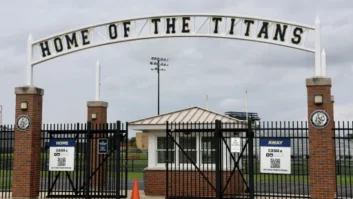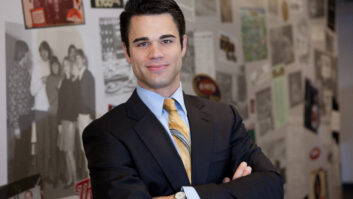
Every semester, I ask my students here at Lesley University how many of them listen to radio. And every semester, fewer and fewer hands go up.
Among those who do listen, most say it’s mainly when they are in the car with their parents. The majority tell me they prefer listening to Spotify or Pandora, where they can get only the songs they want, with no commercials.
Radio is not relevant to their lives, and some tell me it probably won’t be around much longer.
While I wish they felt differently, what they are saying is nothing new.
In fact, as far back as 1927, when “talking pictures” came along, and again in 1948 when a growing number of homes got television, some critics were predicting that soon, nobody would care about radio.
You can also fast forward to 2010, when broadcasters were feeling the rising effects of social media — that too was supposed to bring about the death of radio.
But while reports of radio’s demise have thus far been exaggerated, some very real challenges and problems exist.
As 2020 turned to 2021, I spoke with consultants, owners, programmers and journalists, asking them what they thought the future for broadcasting might hold. Their assessments varied, from being worried to cautiously optimistic to bullish.
Lack of attention
Among the biggest worries is that radio is indeed losing its younger demographics. My students are part of a trend: Teens and young adults are no longer fans of radio as previous generations were.
Nielsen Audio ratings bear this out: For instance since about 2014, according to an analysis by Edison Research, there has been a steady decline in ratings for CHR stations, as well as a decline in time spent listening. Interestingly, the only formats that have maintained some young adult listeners are classic hits and classic rock.
Consultant Fred Jacobs says this should come as no surprise. “The radio industry hasn’t cared about young people, especially teens, for years,” he said. And because of that lack of attention, he fears that “radio is going the way of jazz: an artifact of an older generation.”
He attributes this to the industry’s longstanding focus on the 25–54 demographic, often to the exclusion of anyone younger.
Another veteran consultant, Holland Cooke, concurs, and said, “Today, the real money demo is baby boomers, who grew up with the AM/FM habit.”
Engineering consultant Scott Fybush, who also publishes the NorthEast Radio Watch newsletter, says FMs are doing much better than AMs. Many boomers have fond memories of AM top 40, but these days, while a few heritage AM stations thrive, a growing number are dependent on syndicated programs or going silent.
Fybush expects the trend to continue. “AM is not going to vanish in [the next] 5 or 10 years, but it will become even more of a niche medium, and the thinning of less viable signals has already begun.”
Another area of concern is the lasting impact of media consolidation.
Ed Levine is president/CEO of Galaxy Media, which owns 13 stations in central New York. Like many observers, he cites the Telecommunications Act of 1996 as an important inflection point.
“The challenge that our industry faces,” he says, “is that for the last 25 years, radio has become bent to the will of a very small group of people. They wanted it ‘bigger and bigger,’ ostensibly to do ‘better’ and increase radio’s share of the ad spend. In reality, it was simply to get richer … much richer.”
While a handful of media companies were buying up more stations and financing them with private equity money, a small number of corporate CEOs became very wealthy.
But local stations began encountering problems. “Driven largely by private equity investment, radio was given revenue and cash flow goals that, in retrospect, were impossible to meet. So, when the revenue goals were not met, the only other way to increase cash flow was to cut people locally,” he said.
That reduction in local talent, to save money, was especially troubling, because broadcasters began sacrificing localism, the one thing that made radio unique.
Jerry Del Colliano, publisher of Inside Music Media, has been vocal about what he sees as the misplaced focus of corporate owners who were more interested in what was good for Wall Street, rather than what was good for Main Street.
Ongoing layoffs may have helped the corporate bottom line, but many talented local broadcasters lost their jobs, he said. Del Colliano is also critical of the FCC for allowing so much deregulation that companies are no longer required to maintain a local presence in their city of license. Radio itself isn’t the problem, he says, “it’s what these giant owners did to it.”
Vital information
But even though young people don’t listen as much as they used to, even though time spent listening is down across most demographics, even though there are lingering effects from media consolidation and even though the COVID-19 pandemic has led to economic downturns in many cities, numerous industry people remain hopeful about broadcasting’s future. Among them are local owners and operators who have seen firsthand how radio can still make a major difference.
One is Tami Graham, executive director of KSUT, Four Corners Public Radio, with studios in Ignacio, Colo. KSUT serves four states and includes among its listeners a large tribal population.
For her audience, KSUT has become a trusted resource.
“We serve five rural counties, and many [listeners] are in news deserts,” she says. With no local newspapers, KSUT has stepped in to fill the void for local news coverage.
“People know they can rely on us for vital information … whether it’s about COVID or about the wildfires. Good local content is more relevant than ever.”
She recalls that when the pandemic broke out, “We hired two part-time reporters and began covering it. Our plan was [to focus on it] for two weeks, but the response was so positive that we are still doing it.”
In fact, she notes, 2020 turned out to be a record-breaking year for fundraising, as donors came through to support KSUT’s programming.
“Our mission is “connecting people, creating communities,” she says, “and that is what we have been doing.”
Ed Levine too has found that being live and local works, no matter what kind of format the station has. He stresses the importance of developing local personalities and encouraging them to be heavily involved with their community.
“All of our air talents are native to their market. They know the area, and they love it. They don’t see [working for us] as a steppingstone to somewhere else. They don’t want to go elsewhere.”
Elroy Smith is a veteran urban contemporary programmer. He favors air staff with strong ties to the market. “That means they know the local landmarks, and they can pronounce the local street names.” And because they have their finger on the local pulse, they can react to whatever is important to the community at the time.
For example, during his tenure as operations manager and program director of Bonneville’s KBLX in San Francisco, air personalities volunteered at a food bank while the pandemic raged.
When George Floyd was killed and protests erupted nationwide, KBLX temporarily stopped playing music, instead airing news and information, and the morning show turned to talk. “The phones lines lit up. People wanted to have that connection with us.”
Smith believes building trust with the local community is essential. “People expect us to be involved.”
But what about attracting younger demographics? Is it still possible in a world where young people have so many choices, and radio has so much competition for their attention?
Sean Ross, vice president of music and programming for Edison Research and editor of the “Ross on Radio” newsletter, says, “I think if there’s any way forward, it involves making current music formats better for adults again, so that maybe they’ll again be modeling radio usage for kids when the carpool resumes.” He notes that there are some interesting and creative stations in smaller, non-rated markets.
Fred Jacobs wonders if the average owner understands younger listeners. “Do [they] know what teens want today?”
Jerry Del Colliano believes one reason young people can’t relate to radio is it sounds old to them. “Young people want [to listen to] someone who sounds like them … who talks about the things they care about. It’s not just the music; it’s the personalities. This generation craves authenticity.”
And Ed Levine adds, “You don’t want to just have older people working for you. Hiring younger people changes the culture of a company.”
Online presence
Changing digital habits of course are an important part of the story.
With so many local events cancelled because of COVID, station managers have found that their website often serves as a gathering place, where listeners can find up-to-the-minute information about a news story, listen to a podcast, replay a feature they had missed or interact with the on-air personalities.
Tami Graham says that during the pandemic, KSUT “bumped up our web presence and expanded our digital content. In a way, we are remaking ourselves. There are no program directors now; we have content directors. We want our listeners to have the most interesting content, whether it’s on the air, or on the web.
“We have also collaborated with local partners, like the Colorado Media Project, to create and share content. There is no competition — just collaboration for the good of the community.”
Holland Cooke feels that many programmers are adapting to the fact that today’s listeners tend to be busier and have shorter attention spans. “And people today want everything on demand,” he says, noting they don’t want their time wasted.
Scott Fybush agrees that some broadcasters are adapting to these new realities, but “not fast enough or with enough innovation.” He said that with more people working from home, the old idea of programming mainly to people in the office needs to be revisited, as well as rethinking traditional dayparts: Are people who now work or study at home getting up early to listen to a morning show, for example? And what about other dayparts?
“Almost nobody is paying attention to weekends, even though there has been a spike in usage then.”
“Embrace actionable”
Two comments I heard repeatedly: One, successful stations have relatable personalities who are plugged into the community. Two, successful stations are live and local as much as possible.
In a post-media consolidation era, as money-losing corporations divest from various properties, Del Colliano predicts there will be new opportunities for local ownership.
“Local operators may be the salvation of radio. After the [giant conglomerate owners] are gone, the small owners who remain will be able to reinvent the industry.”
Cooke too sees enhanced opportunities for radio, even during the pandemic. He advises programmers to not only “embrace local,” but to also “embrace actionable.” In other words, “Give listeners actionable information, like where they can get a vaccine, get an expert with tips for keeping their pets safe and healthy.”
And while all acknowledged the challenges of doing radio today, the people with whom I spoke agreed that the radio industry doesn’t do an effective job of selling its benefits.
“Radio suffers from a perception problem,” said Ed Levine. “We’ve got an inferiority complex. People may not listen for as long as they used to, but the listeners are still there.”
Perhaps there is no one format that will be radio’s salvation, and perhaps the programming will vary in each market, depending on the audience’s needs.
But radio still matters, says Elroy Smith.
“The story about the demise of radio is false,” he said; when it’s done well, “radio can still speak to today’s audience.” In fact, he says, “radio can be a breath of fresh air.”
The author is an associate professor of communication and media studies at Lesley University, Cambridge, Mass., a former broadcaster and radio consultant. She often writes about the history of broadcasting.
Comment on this or any article to [email protected] with “Letter to the Editor” in the subject field.







